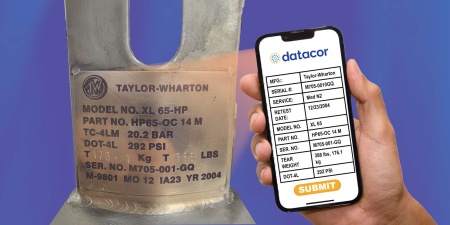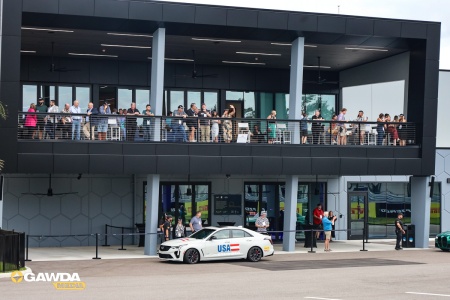Keeping tabs on one’s competitors is not a bad idea, particularly when they come from alternate channels and are somewhat out of sight. Welding and Packaged Gases distributors began seeing some industry specific SKUs slip into alternate channels with the emergence of e-Bay. Managers would become distressed when a customer would appear in one’s showroom, sight a machine sitting on the floor, and remark that they had just purchased the identical product from an e-Bay site. At that point, terms like B2C and B2B were not even in our vocabulary.
We learned quickly that Amazon, and a whole group of industrial distribution supply companies – Grainger, MSC, Motion, and Fastenal, to name just a few, were building a web presence that was gaining acceptance across a wide range of clients. We had no idea of the magnitude of welding equipment, supplies, and accessories that were escaping from our channel and finding their way to clients we considered as “our customers.” While we would prefer suppliers to welding and gases distributors remain “loyal” to our channel, everyone understands that all suppliers have a fiduciary responsibility to their respective stakeholders to pursue profitable business regardless of where it may lead.
While managers in the Welding and Gases distribution business were becoming aware of electronic business practices, we still were convinced that relationship selling would prevail in an atmosphere where we provided local inventories, technical advice, installations, training, repairs, and were part of local community involvement.
Along came COVID, and relationship selling collapsed, as face-to-face engagements and customer visits came to a halt, and electronic interfaces became the only way to exchange information and conduct business transactions.
The good news is that the Welding and Gases Distribution community has figured all of this out and is building a multi-front solution. Our manufacturing and supplier colleagues are providing high quality, syndicated content on their web pages to aid in easy research; ERPs are being modified to connect to B2B platforms, Artificial Intelligence will assist with predictive analytics in support of VMI and Telemetry that drives auto-replenishment and logistics efficiency.
We will use these new tools of technology. But we will also reinvent the value of Relationship Selling, upscaled in the Consultancy World now calling it by the new name of “ENTERPRISE RELATIONSHIPS.” This expands the role of our outside salesperson to include selling of the Process of Digitalized Business between trading partners, in addition to offering manufacturing solutions, equipment recommendations, installation, training, and maintenance. In an atmosphere of automation, it will clearly include Robotic or Cobot considerations.
However, our competitors are not “asleep at the switch.” MDM just released a series of articles authored by John Gunderson examining Fastenal’s BIG PIVOT. It is worth reading. Fastenal is taking up residence in their customer locations. No longer just vending machines, but managing customer tool cribs, stockrooms, offering manufacturing engineering on production floors, conducting preventative maintenance and repair services, as well as providing Continuous Improvement trainers to set up and lead Value Mapping Teams. They are embedding themselves deeply in their customers’ operations, establishing solid ENTERPRISE RELATIONSHIPS.
This is all part of Fastenal’s “Big Pivot” strategy. They have, or are in the process of shuttering many brick and mortar retail sites, abandoning their rapid delivery fleet, and reassigning associates to customer on-site Teams. They are convinced that their digital platform superbly manages inventory, price files, VMI, EDI, and Punch Out transactional functions, as well as handling logistics matters. This allows their embedded associates to concentrate on building a full portfolio of ENTERPRISE RELATIONS.
Another element of the Big Pivot is product line expansion. It is the complementary nature of welding accessories and welding related PPE items that brought manufacturers and suppliers of these goods into Fastenal’s focus. As they look at every item in use in their customers’ plants, they will decide whether such an addition will be a revenue producer for them. They then showcase their business model to a new potential supplier hoping to convince them that their approach to their client base will represent new sales for that vendor.
It is certainly reasonable to assume that others in the Industrial Distribution Vertical will adopt like strategies.
THESE STEPS ARE NEITHER NEW NOR REVOLUTIONARY.
If we dare roll the clock back MANY years, we will see that our welding and gases industry deployed these techniques before many of us were born. Union Carbide’s Linde Division had “resident sales engineers” in steel mills to guide the operations of cutting tables and scarfing machines. The Oxweld Railway Division placed full time welding engineers in locomotive roundhouses to oversee rail car wheel maintenance, and on right of ways to supervise welding of continuous rails. The Linde Division’s Medical Group hired full time Inhalation Therapy Nurses to train hospital account staff in the use of Linde Equipment. Airco, the predecessor to BOC, placed welding engineers in shipyards, its medical division, Ohio Medical staffed respiratory therapy departments in hospitals.
Lincoln Electric was resident in John Deere, Caterpillar, Ingalls Shipbuilding, and Newport News Shipyard. National Cylinder Gases built, operated, and maintained the ASU inside the South Chicago Inland Steel Works. With the acquisition of UGI, Nucor Steel is doing that today.
As we all seek to find the summit in providing the ultimate in the outstanding Customer Experience, we realize that some “tried and true” practices still work. The augmentation comes from taking full advantage of digital processing and yet to be perfected processes buried within Artificial Intelligence.
Yes, it makes sense to pay attention to things your competitor may be either doing or considering. And these practices may already reside in a distribution model similar to your own. But the goal remains the same – provide your customer with the best possible relationship experience.










